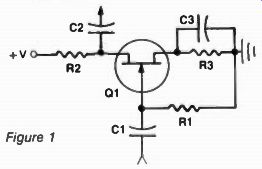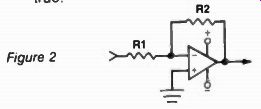Have you taken the CET test yet? If not, here is quiz number 8 to help you get ready. It is hoped that solving these quizzes is proving beneficial to you. In any case, they should indicate those areas where some review may be helpful. For the most benefit, don't look at the solution until you have made your best effort.
By Frank R. Egner, CET
1. All coils have some resistance, Rs, in addition to reactance, X,. As a general rule, Rs can be neglected during analysis when:
a. X. = 10 Rs or more.
b. Rs = 10 X, or more.
c. X = 5 Rs or more.
d. Rs = X, or less.
2. A single trace oscilloscope can be made to operate like a dual trace scope by using:
a. A paraphase amplifier.
b. A push-pull amplifier.
c. A push-push amplifier.
d. An electronic switch.
3. A VOM is used to measure vacuum tube bias. For the most correct indication:
a. Use a low range for larger deflection.
b. Use a high range for minimum loading.
c. All ranges provide comparable indications.
d. Low ranges are more accurate than high ranges.
4. An electronic law states that the polarity of an induced voltage is always of such polarity as to oppose the force that created it.
This is known as:
a. Ohm's law.
b. Kirchhoff's law.
c. Lenz's law.
d. Thevenin's theorem.
5. In general, RC coupled networks have negligible effect on the coupled signal when:
a. R = 1 10 X, or less.
b. R = X.
c. X = 1 , 10 R or less.
d. C is small and R is large.
6. The silicon controlled rectifier (SCR):
a. Is turned on and off by a gate pulse.
b. Is turned on but not off by a gate pulse.
c. Turns on with dc and off with a gate pulse.
d. When turned on, conducts in either direction.
7. A forward biased PNP bipolar transistor conducts current by the movement of:
a. Holes from C to E.
b. Electrons from E to C.
c. Holes from E to C.
d. Majority carriers from C to E.
8. When high frequency currents travel through a conductor, the wire resistance becomes appreciable. This phenomenon is called:
a. Magnetic induction.
b. Self inductance.
c. Conductor reactance.
d. Skin effect.

9. The terminals of the transistor in figure 1 are named:
a. Emitter, base, collector.
b. Source, gate, drain.
c. Base 1, emitter, base 2.
d. Cathode, gate, anode.
10. In figure 1, transistor Q1:
a. Must have forward bias to conduct.
b. Conducts by the movement of positive charges
c. Is a type of unipolar device.
d. Is a type of MOSFET.
11. When compared to NPN and PNP transistors, Q1 in figure 1:
a. Is voltage, rather than current operated.
b. Provides voltage instead of power gain.
c. Has a lower high cutoff frequency.
d. More than one but not all are true.

Figure 2
12. The device in figure 2 is a (an):
a. Non-inverting amplifier.
b. Operational amplifier.
c. Inverting amplifier.
d. More than one but not all are true.
13. In figure 2, if R1 = 10K and R2 = 100K:
a. The voltage gain is 10.
b. There will be no voltage gain.
c. Signal distortion is likely.
d. Input and output are in phase.
14. In figure 2, if R2 becomes open:
a. Gain will be less than unity.
b. Gain will be excessive.
c. The device will be destroyed.
d. Voltage gain will decrease.
15. An NTC thermistor:
a. Increases resistance with increased temperature.
b. Is a type of linear resistor.
c. Decreases resistance with decreased temperature.
d. Decreases resistance as temperature increases.
16. In a voltage divider, a 6.8K 0.5w resistor drops 47 volts. The resistor:
a. Will likely overheat.
b. Will quickly burn out.
c. Has ample power rating.
d. Should be at least 1w.
17. A TV pentode IF amplifier blocks the signal. The tube tests good.
The tube is removed and socket voltages measured. Eb = 150v (B+), Eg2 = 150v, Eg1 = 0 v, Ek = 0 v. The trouble may be:
a. An open cathode capacitor.
b. Highly increased ser 4n resistor.
c. A shorted cathode by-pass.
d. IF transformer primary open.
18. Color TV signals conform to what the human eye can see. The higher frequencies (detail) are transmitted in:
a. Blue.
b. Red.
c. Green.
d. None of these.
19. The color signal is interleaved with the luminance signal. This means the color signal is:
a. Only transmitted on even scan lines.
b. Spaced between the luminance signals.
c. Only transmitted on odd scan lines.
d. Interlaced on even fields.
20. The horizontal frequency prescribed for color TV transmission is:
a. 15,750 Hz.
b. 15,734.265 Hz.
c. 15,764.264 Hz.
d. 15,750 plus or minus 15 Hz.
21. The vertical frequency prescribed for color TV transmission is:
a. Precisely 60 Hz.
b. 60.94 Hz.
C. 59.94 Hz.
d. 60 plus or minus 1 Hz.
22. Only two color signals are transmitted on the TV signal. The third color can be recovered because the transmitted color signals are:
a. Opposite in polarity.
b. The same polarity.
c. 45 degrees out of phase.
d. In quadrature.
23. The on or off status of the color killer stage is controlled by the:
a. AGC voltage.
b. ACC voltage.
c. Burst signal.
d. Color oscillator.
24. The hue of the reproduced picture is determined by:
a. The phase of the I and 0 signals.
b. The R-Y and B-Y signals.
c. The phase of the color oscillator.
d. All of these.
25. The saturation of the reproduced colors is established by the amplitude of the:
a. R-Y, B-Y, and G-Y signals.
b. Y signal.
c. 3.58MHz oscillator signal.
d. Luminance signal.
Electronic quiz answers:
1. a 6. b 11. d 16. c 21. c
2. d 7. c 12. d 17. b 22. d
3. b 8. d 13. a 18. d 23. c
4. c 9. b 14. b 19. b 24. d
5. c 10. c 15. d 20. b 25. a
(source: Electronic Technician/Dealer)
Also see: CET quiz, part IX -- Radio & TV